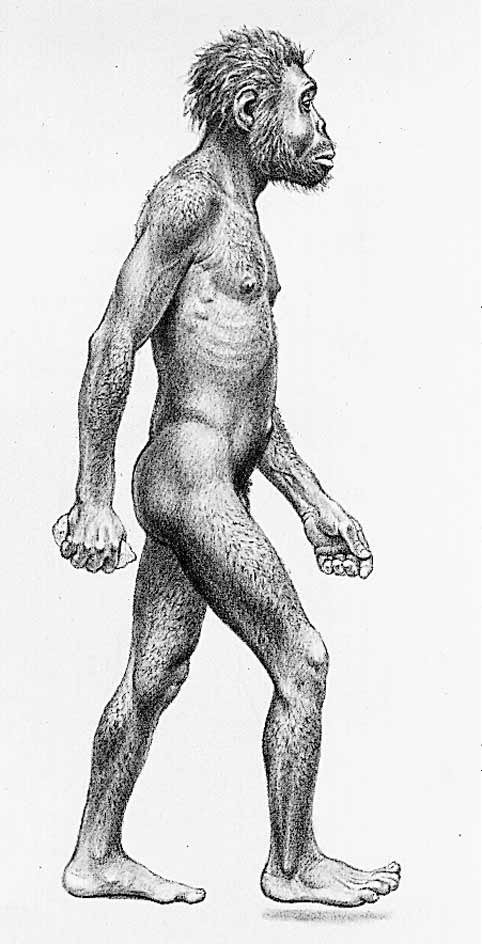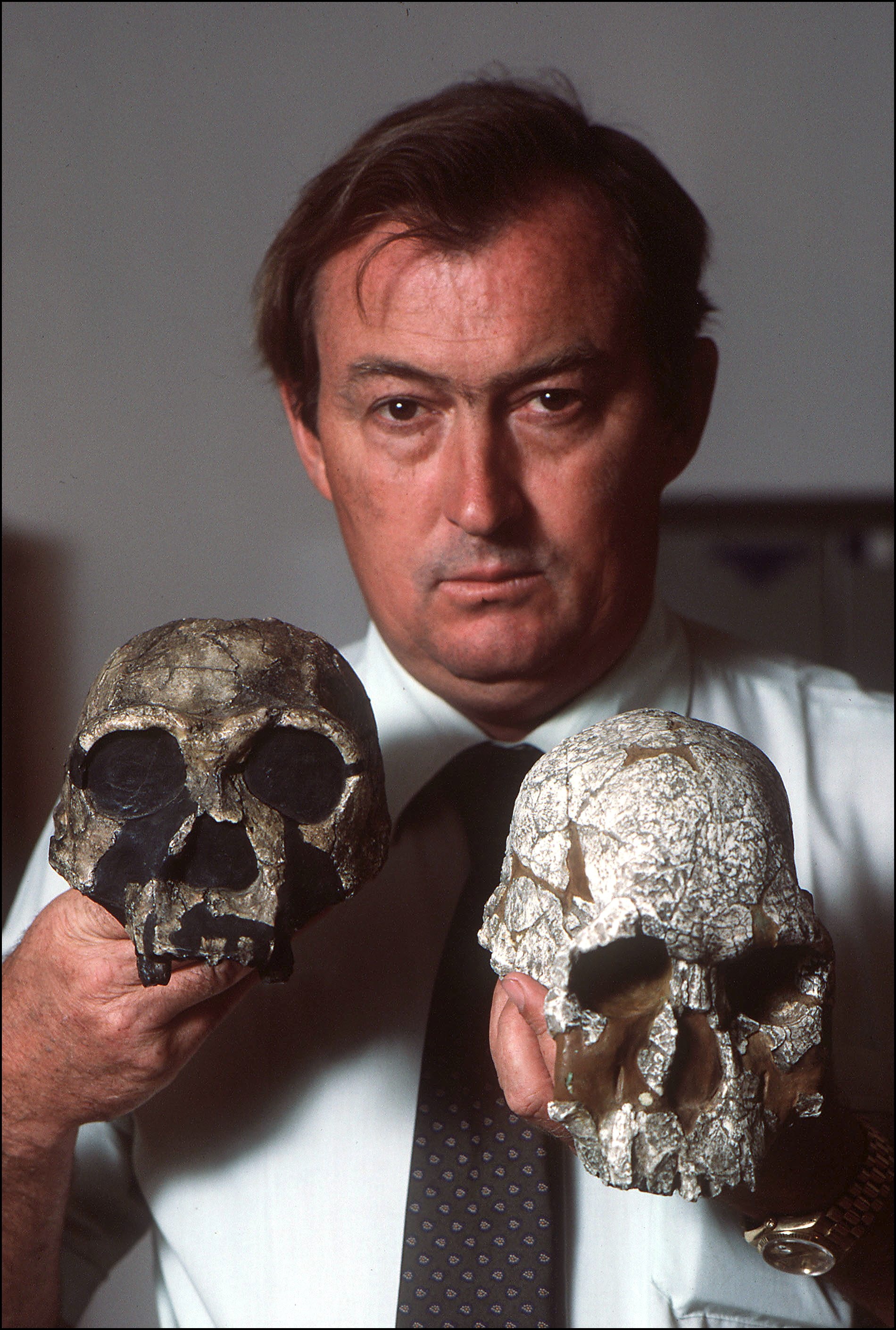Homo habilis, << HOH moh HAB uh luhs, >> was an early form of human being. Fossil evidence indicates that these prehistoric people lived in Africa from about 2.4 million to about 1.7 million years ago. Fossil skulls also show that Homo habilis had a brain that was a little more than half the size of a modern human brain. The Latin word Homo means human being. The term habilis means skillful or handy. Scientists gave Homo habilis this name because its fossils have been found along with some of the earliest-known stone tools. These finds suggest that Homo habilis made the tools.

Anthropologists believe that two other species of early human beings, Homo rudolfensis and Homo erectus, lived in Africa at the same time as Homo habilis. Homo rudolfensis differed from Homo habilis in having a larger brain; a larger, more pronounced face; larger molars (back chewing teeth); and a larger overall body size. Some scientists think that Homo habilis and Homo rudolfensis are actually one species. They believe the smaller Homo habilis was actually the female of the species and the large Homo rudolfensis was the male. The difference in body size between males and females of the same species is known as sexual dimorphism. Sexual dimorphism is a characteristic of other species of prehistoric human beings as well as many species of apes.

Homo erectus fossils from eastern Africa indicate that this species had a brain as large as that of Homo rudolfensis and molars as small as those of Homo habilis. These traits make Homo erectus more similar than Homo habilis or Homo rudolfensis to people of today. Scientists believe that Homo erectus is probably an ancestor to later human beings and that Homo habilis and Homo rudolfensis became extinct.
The first Homo habilis fossils were found at Olduvai Gorge, Tanzania, in 1960 in an expedition led by the British anthropologist Louis Leakey. Other Homo habilis fossils have been found at Lake Turkana in Kenya and at other sites in eastern and southern Africa.
